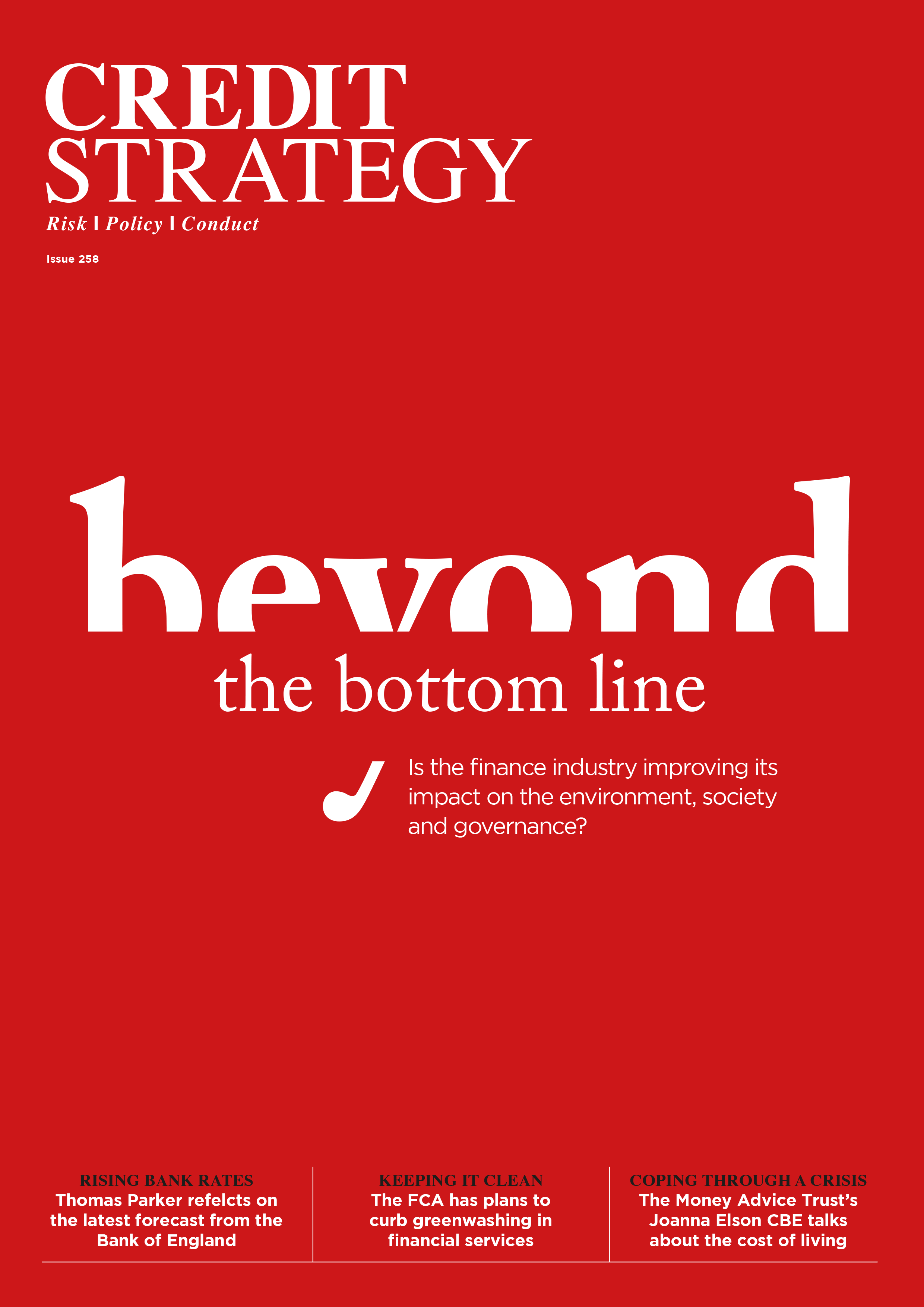Dear visitor,
You're reading 1 of your 3 free news articles this quarter
Register with us for free to get unlimited news, dedicated newsletters, and access to 5 exclusive Premium articles designed to help you stay in the know.
Join the UK's leading credit and lending community in less than 60 seconds.
Is BNPL making credit assessments more complex?
Ahead of the launch of their new Consumer Lending Confidence Report, Credit Strategy (CS) sat down with LexisNexis Risk Solutions’ Neil Allen (NA) to discuss the current state of alternative credit data in the consumer credit market.

Senior Journalist, covering the Credit Strategy and Turnaround, Restructuring & Insolvency News brands.
 Thomas Parker
Thomas ParkerSenior Journalist, covering the Credit Strategy and Turnaround, Restructuring & Insolvency News brands.
CS: Before we dive into the questions, could you give us a brief introduction of yourself and why you decided to author this report?
NA: “I lead the credit risk strategy at LexisNexis Risk Solutions UK&I. With over two decades of experience in financial services and Credit Reference Agencies, I have been actively involved in the credit industry in one form or another.
“I’m very much a fair finance advocate and recently my focus has shifted towards alternative data and its impact on credit decisions. For our Consumer Lending Confidence Report, we aimed to discover the main concerns of companies in our marketplace in the UK.
“To achieve this, we surveyed 150 consumer lending experts across various lending products to gather insights on the key challenges and opportunities in the market today, and the results were quite revealing.”
CS: How do the UK results compare to other major economies that may be facing the same issues?
NA: “It has been interesting to observe the global themes presented in the report regarding how lenders are seeking better ways to predict risk. The themes that emerged across the customer life cycle include attracting new qualified borrowers, accessing and utilising external data, and collecting on delinquent loans.
“Additionally, confidence in traditional credit data is waning, as insights gained from these sources are increasingly seen as insufficient for helping lenders remain competitive in a rapidly evolving market.
“According to the report, 59% of lenders are less confident in making consumer lending decisions with traditional credit data alone compared to a year ago. In contrast, the adoption of alternative data is on the rise, as lenders aim to regain visibility into consumer credit risk.
“Notably, 86% of lenders feel more confident in making consumer lending decisions using alternative credit data compared to a year ago, and 65% are considering additional investments in this area. It is perhaps not surprising that similar results have been observed in the UK in these key areas of consideration for lenders.”
CS: For the UK specifically, do you think the cost-of-living crisis has had an impact on the reliability of traditional credit risk assessment data?
NA: “Confidence using it aside, it’s difficult to say whether traditional credit data is more or less effective than it has been in the past, although there are some well known gaps.
“However, an increasing demand for credit, driven by consumers’ current financial challenges, is likely to expose any deficiencies in this data. Especially as consumer population profiles become more complex.
“Our UK specific research indicates that 58% of lenders told us they feel less confident in making consumer lending decisions based solely on traditional credit data compared to last year.
“A major factor contributing to this is coverage; nine in ten lenders reported difficulties in evaluating up to a quarter of their applicant population using traditional credit data alone.
“Additionally, latency in data supply means that decisions are sometimes based on outdated information, with 89% of respondents highlighting limited visibility of tradeline data regarding negative payment histories as a significant issue.”
CS: Do you think credit providers will have declined to lend because of not having enough data to make a lending decision on?
NA: “Yes without a doubt. If creditworthiness is assessed solely based on an individual’s past credit interactions, lenders risk missing recent behaviours that could indicate a consumer’s ability to manage their commitments effectively.
“According to our research, 84% of respondents are more confident in making consumer lending decisions based on alternative credit data than a year ago, and a third said they are exploring new types of alternative data to enhance their credit decision-making.
“This indicates a growing trust in alternative data. A misconception I hear a lot is that having more data will lead to more declined applications – this is not the case. Our internal analysis shows that the vast majority of consumers will be placed into lower-risk categories when risk scoring is supplemented with alternative data.
“This allows lenders to adjust their credit policies appropriately and essentially say yes to more applications.”
CS: What economic factors do you believe are contributing to a rise in credit delinquencies?
NA: “There is little doubt that the ongoing cost-of-living crisis continues to put a strain on disposable incomes, which is increasing the demand for credit.
“There is already rising demand for unsecured lending, along with a shift in consumer behaviour towards using credit cards and Buy Now, Pay Later (BNPL) for purchases that might once have been covered by a loan.
“Used wisely, these products can help consumers balance their spending with repayment capabilities more effectively.
“However, overuse, especially amid higher interest rates and escalating balances for credit cards or loan stacking of multiple agreements in the case of BNPL, can lead to financial challenges and potentially more delinquencies.
“Our research supports this view, with 43% of respondents experiencing an increase in delinquencies over the past twelve months.
“So it’s not surprising that 95% of them see the collection of delinquent loans as one of their top anticipated challenges over the next two years and nearly half indicated that closely monitoring loan portfolios for signs of financial distress would be a key priority over the next six months.”
CS: Switching to the other end of credit lifecycle, can alternative credit data help with Financial Inclusion?
NA: “Absolutely and we know that financial inclusion is a key focus for the government and a high priority in the regulator’s agenda.
“Across the whole UK population, we have found that around 7.1 million people fall into the definition of ‘financially excluded’, meaning they could potentially struggle to access affordable and fair financial services.
“Therefore, it is encouraging to see that 65% of lenders are actively looking to expand their use of alternative data across the loan lifecycle. With over three-quarters of the financially excluded population able to be more effectively risk-scored using alternative data sets, we believe this will have a significant impact.
“Ultimately accessing credit at fairer terms will be life-changing for some consumers.”
CS: Where else do you see the use of alternative data evolving across different stages of the loan lifecycle?
NA: “If enabling financial inclusion and promoting growth are not reasons enough for lenders to evolve how they make credit decisions, then the Consumer Duty certainly is.
“This encourages companies to ensure positive outcomes for customers, both for those applying for new loans and for existing customers who may be showing signs of financial difficulty.
“Our research indicates that 79% of lenders will be closely monitoring their loan portfolios for signs of financial distress due to regulatory change.
“There is significant potential for alternative data to help and those lenders who can adapt by incorporating alternative credit data into their workflows may be more likely to remain compliant, competitive and profitable.”
CS: How does the presence of BNPL credit affect wider credit risk assessments do you think?
NA: “At its best BNPL is a useful tool for consumers to get what they want conveniently and at its worst makes it too easy for consumers to overextend themselves.
“The evidence for the latter is growing with the FCA previously reporting BNPL users were over four times as likely to have missed a payment of a bill or credit commitment.
“However, it is increasingly clear that these products are on track for regulation and regulatory intervention must strike a careful balance. If the regulations are too strict, some providers may decide to exit the UK market.
“However introducing more appropriate risk checks and providing additional protections for consumers seems proportionate to mitigate the potential harm associated with an unregulated market that is growing so fast.”
CS: What kinds of generational or demographic differences do you think exist when it comes to financial behaviour?
NA: “Our analysis of financial inclusion shows that certain groups are disproportionately affected by having thin or limited credit files.
“These groups include graduates, young adults living with their parents, divorcees, and individuals who are either new to the country or have recently come out of long-term care or the prison system.
“Essentially, anyone who has been inactive in terms of credit for a period of time may find themselves in this situation.
“Traditional credit data largely focuses on past credit usage, which can exclude many individuals if they haven’t personally applied for credit services or been listed on household bills, bank accounts, or other utilities for a while due to their circumstances.
“It’s important to note that having a thin credit file does not necessarily indicate a high risk of defaulting on repayments; it might simply mean that the individual is saving for a deposit.”
CS: How can alternative data be used in collaboration with data from the more traditional forms of credit bureau data?
NA: “One of the advantages of alternative data is that it reflects non-traditional behaviours, when paired with traditional credit data currently used in traditional credit scores, it delivers a more comprehensive view of a consumer’s credit health.
It’s not necessarily about using one or the other but being able to overlay insights that are not currently being used in the decisions.
“This different lens on an individual’s credit situation can be the catalyst for a company to either make a decision where they couldn’t before or offer a product or a more beneficial rate based on observed behaviour from different data sources.”
Over the month of November Credit Strategy, in partnership with LexisNexis Risk Solutions, is investigating the benefits of alternative data. Take a look at the Consumer Lending Confidence Report to find out where we currently stand.
Stay up-to-date with the latest articles from the Credit Strategy team
READ NEXT
UK government grapples with bid-rigging risks as CMA trials AI tool
Get the latest industry news







